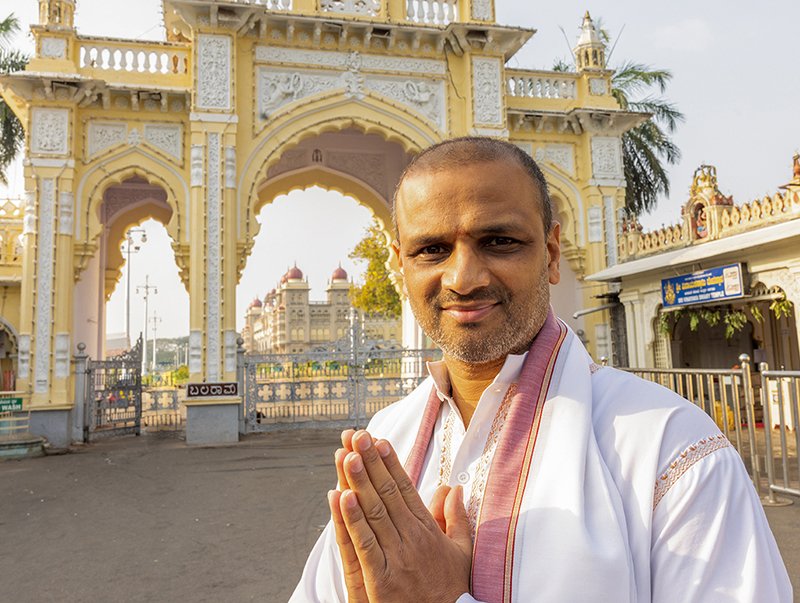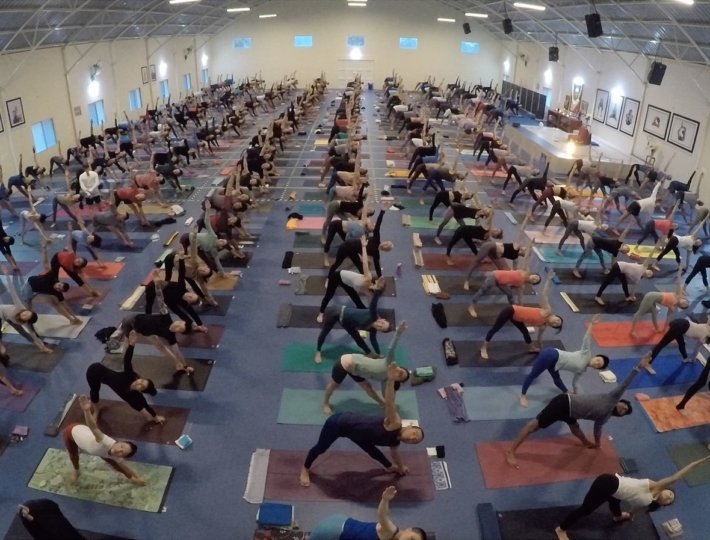Death unavoidably touches and changes us. Although we often deem death a negative force, the transformation it instigates can be positive. Caitlin Doughty, a mortician and death acceptance advocate, says, “Death is the engine that keeps us running, giving us the motivation to achieve, learn, love, and create.” Whether it motivates us to live more fully or calls us to examine our beliefs, death—our own or that of those we love—will affect us. Exactly how death and loss affects us is determined by our perspective and how we engage with the process.
Because fear of death and dying is common in contemporary Western culture, many of us do not hold an accepting attitude towards, nor do we actively participate in, the process. And yet, death is a primary source of what nourishes life. By engaging in a loved one’s dying process and staying present in the aftermath of their death, we can explore and ferment our values, evaluate and prioritize other relationships, and examine how we care for others and ourselves. And by intentionally cultivating a relationship with our own death—regardless of our age or degree of health—we might just be able to dispel our fears, sidestep unnecessary suffering, and enhance our quality of life.
But how exactly can we participate in death and dying, be present with grief, and prepare for our own end? I asked death experts, caregivers, and grievers about tangible ways we can engage with death and loss for the benefit of ourselves and others.
How to Actively Participate in the Dying Process
Cassandra Yonder is a death midwife—someone who provides death education, home funeral guidance, and bereavement support for dying individuals and their loved ones. She encourages people to participate in death by “going toward the death and dying that’s present in your own everyday life.” For instance, if a pet is dying, talk with your kids about it. If you pass a dead bird on the side of the road, acknowledge it. When you feed yourself, consider how death was involved.
Yonder believes reengagement happens first and foremost through candid conversations, among individuals of all ages, about the fact that death surrounds and is happening to us every day. By discussing this reality, instead of overlooking it, we can begin to realize what death—and its counterpart, life—really mean to us.
Related: Stop Telling Me I’m Going to Die
Another leading advocate of death reengagement movement, Chanel Reynolds, lost her husband in an accident in 2009. She was struck by how many people struggled to speak frankly about death. Reynolds now encourages people to address the topic directly: “Just ask: ‘How are you feeling today? I’m so sorry, I really don’t know what to say.’”
In these conversations, it is important to pay attention to the language used. “It’s uncomfortable for many to use the words death and dying,” says Yonder. When death was removed from the domestic sphere in the 1930’s and placed in the hands of medical professionals intent on pushing the end off as long as possible, the language used to describe the process became euphemistic. Terms like “passing away” became used more readily than “dying.” While there is no shame in using euphemisms, it is important to recognize that to some degree they remove us from the reality of what is happening. Reynolds believes that one way we can reclaim death is by using and normalizing the terms “death,” “dying,” and “dead.”
Another side effect of the institutionalization of death is that we often do not help our own dying loved ones when they become incompetent. But caring for those who can no longer care for themselves is a significant opportunity for us to get closer with death and dying in intimate and meaningful ways. We view the messy aspects of dying—when one can no longer clean or feed or toilet oneself—as indignities to cover up and scorn. But Yonder advocates that we take charge of the care of our dying: “Do not assume that their incompetency is an indignity. Do not assume that their worth is diminished. Enfold them in love and care, and allow them to not be competent anymore.” She encourages people to care for the dying like we care for young children.
It requires tremendous courage and open-heartedness to be an accommodating and compassionate caregiver to the dying. But only by doing so can we begin to dismantle the fear-based beliefs that death is wrong and something from which to turn away. Our presence with, non-judgmental attitude towards, and practical assistance in the dying process are the greatest gifts we can offer loved ones. And, in turn, we grant ourselves the chance to reflect on how we want our own eventual dying to unfold.
To bear witness as a caregiver to the profound occurrence of someone dying is no small undertaking. Senior Zen Priest Robert “Chodo” Campbell, who companions the dying and leads death-based programs at the New York Zen Center for Contemplative Care, views death caregiving as: “Simply being present to the person in front of me. To listen. To hold.” In order to do this well, it is imperative to first and foremost care for oneself. Chodo urges caregivers to inquire with themselves about their limits, and then honor those limits.
Chodo also reassures caregivers that all feelings are normal and welcome: “It is human to be angry, resentful, or frustrated, or to find yourself wanting to get the hell out of there.” He advises they speak their feelings out loud to someone else, take respite days and breaks, and ask for support.
A range of feelings may also arise for the dying. How can we as caregivers best serve the dying person and support their version of a “good death”? Chodo recommends caregivers show up in the dying experience committed to honoring what is true for the dying person: “We want everyone to die happy, to have a peaceful death. But there are people who have lived an angry life, and they’re going to die angry, and they’re okay with dying angry. They don’t want me to fix it.” What matters in the end, Chodo has realized, is to be a companion, not a problem-solver.
Related: A Meditation for Grief
How to Process Loss and Respect Grief
Engaging with death does not happen only during the dying process—participation can happen in grief as well. Once life has ended for the dying individual, compassionate companionship is needed for those mourning the deceased. Reynolds encourages people to support grieving individuals without a mission to do anything other than offer loving presence: “It’s important to listen and just show up, to be there and not try to fix anything,” she says, echoing Chodo’s advice.
But it can be awkward and overwhelming to be with others—and ourselves—in grief. Words can feel elusive and a range of feelings ebb and flow. Why is it so crucial for us to ride these waves and stick with each other through the uncomfortable times in death’s wake, and how can we do so?
Death engagement advocates believe that by talking about death before it is on the horizon, we set ourselves up for a more easeful grieving process. Yonder clarifies, “Accepting death doesn’t mean that you won’t be devastated when someone you love dies. It means you will be able to focus on your grief, unburdened by bigger existential questions like ‘Why do people die?’ and ‘Why is this happening to me?’”
Our cultural discomfort with death—and its residue, grief—often results in unreasonable expectations that people will mourn in a private and subdued way within a limited timeframe. But, as Reynolds reasons, “Grief and loss are things that are going to happen in ways that you can’t plan for. You can’t fast-track the grief process.” And grief is neither an abnormal nor inferior response to loss; Chodo constantly is reminding people, “Grief is completely natural.”
And yet it seems to be a common impulse to push it away. When she suddenly became a 39-year-old widow raising a five-year-old, Reynolds felt the natural urge to “get out of this feeling.” But she chose not to run away, drink too much, or distract herself—which was how she had dealt with difficulties before. She realized she needed to confront this grief head-on, to be the best mother she could be. For one year, Reynolds did everything she thought would help her feel: “I practiced a lot of yoga and meditation, I went to see a counselor every week, I learned how to surf, I got tattoos I had always wanted, I worked out a lot, I took kickboxing classes, I ran a marathon. I did everything I could to be in my body and to feel all of the feelings. It felt like the only way I was going to make it through—not just make it through, but be whole, happy, alive, and engaged again.”
Six years later, Reynolds now offers legal and emotional advice to people about how to navigate the raw state of instability and chaos that often comes after a death.
Participation in the grieving process need not focus solely on the past, but can be done in ways that move us forward. In the groups Chodo facilitates for individuals coping with the aftermath of death, he offers tips for practical actions that support the unfolding—rather than the stagnation—of grief: “Write a letter to the dead person, to ask for forgiveness, if that’s what’s needed. Introduce the deceased person to others through a photograph.” Taking such actions helps one accept the reality of the loss, while also integrating the deceased into the present and future.
When being supported in her grief, Reynolds says she wanted others “to just listen to me. Let it be uncomfortable. I want to talk about the person I just lost. It’s not that I don’t believe that they’re dead, but they’re still part of my life.” We must make space for everyone to experience the ramifications of death in their unique way. Only by doing so can we abate our fears, feel our feelings, and heal. As uncomfortable as it may be, the way back to vibrant living requires being present with grief.
How to Prepare for Death
Another important way to participate in death and dying—and ease the experience for ourselves and our loved ones—is to prepare for our own death (if we are brave or fortunate enough to be able to map it out for ourselves).
“Putting our fingers in our ears takes more energy than talking about it or getting a few things done,” says, Reynolds, whose husband’s tragic death turned her life sideways. But we often don’t know where to begin when it comes to talking about death, or the fact that a coworker has cancer, or that our parents are aging. And in the face of confusion and overwhelm, many do nothing.
Related: The Glass is Already Broken
Which practical facets of dying should we consider in advance, and how can we do so without becoming overwhelmed? Reynolds offers a free, step-by-step guide on her website so people can look at all the things that need to be done and break them down into brief tasks that can be accomplished in five-minute increments.
People of all ages can begin the preparations that need to be made around their death: writing their obituary, planning their memorial service, deciding what happens to their body. Chodo leads a program for people whose death is not necessarily near, and guides them through these steps. He frames the undertaking as one involving choice, creativity, and perhaps even some pleasure: “Like planning a wedding, let’s plan my dying.”
Though death may not be on the visible horizon, we can take baby steps towards it through decision-making. By making a plan, family members are relieved of guessing what the deceased would have wanted. And the process of making those plans might even allow us to foster a peaceful relationship with our death.
When we choose to engage with death, we can live and care for each other and ourselves better. By actively processing death, we improve the way we live. Furthermore, we help shift the cultural paradigm from a fear-driven relationship with mortality to a peaceful one. Whether this is inspired by witnessing another dying, by navigating grief, or a by curiosity sparked at any age, it is an empowering endeavor that can have boundless positive effects.









Comments (0)